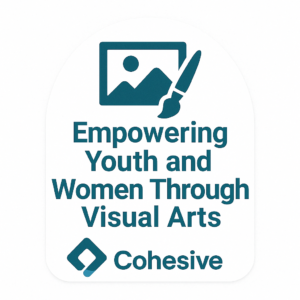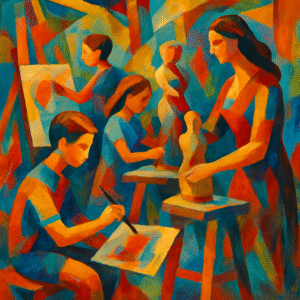The canvas and the sculpted form offer more than just creative outlets; for BAME (Black, Asian, and Minority Ethnic) youth and women in the UK’s diaspora communities, they can be powerful tools for self-expression, empowerment, and cultural identity. Learning to paint or sculpt can be transformative, enabling individuals to articulate their inner feelings about life and society, and fostering the development of a new, dynamic genre of art within the UK.
One of the most significant benefits of artistic expression for BAME youth and women is the ability to navigate and articulate complex emotions and experiences. Often, individuals from marginalised communities face unique challenges, including discrimination, racism, and cultural alienation. Art provides a safe and non-confrontational space to explore these issues, allowing for a cathartic release of pent-up feelings. A painting can capture the subtle nuances of microaggressions, while a sculpture might embody the strength and resilience required to overcome systemic barriers. This creation process becomes a form of self-therapy, promoting mental well-being and emotional healing.
Moreover, art can serve as a bridge to cultural heritage and a tool for reclaiming identity. For many BAME youth and women, there may be a sense of disconnect from their ancestral roots, whether due to migration, assimilation, or the erasure of their history. By engaging with traditional art forms or incorporating cultural motifs into their work, artists can reconnect with their heritage, celebrate their identity, and challenge dominant narratives that have historically marginalised their experiences. This reclamation of identity is a powerful act of self-affirmation and can foster a sense of belonging and pride.
Furthermore, learning to paint or sculpt can empower BAME youth and women by providing them a voice and a platform. In a society where their perspectives are often underrepresented or misrepresented, art allows them to take control of their narrative. Through their creations, they can challenge stereotypes, raise awareness about social injustices, and advocate for change. Their art becomes a form of activism, sparking dialogue, inspiring empathy, and mobilising communities.
Another exciting possibility is the development of a new genre of art within the UK. BAME youth and women can create art transcending traditional boundaries by drawing on their unique experiences, cultural backgrounds, and artistic influences. This new genre could blend elements of traditional art forms with contemporary techniques, incorporating diverse media and perspectives. It has the potential to enrich the UK’s artistic landscape, challenge existing power structures within the art world, and create a more inclusive and representative cultural space.
In conclusion, learning to paint or sculpt for BAME youth and women in the UK’s diaspora communities cannot be overstated. It is a pathway to self-expression, a tool for reclaiming identity, a source of empowerment, and a catalyst for creating a new and vibrant genre of art. By providing access to artistic education and resources, we can unlock the creative potential of these individuals, allowing their voices to be heard and their perspectives to shape the future of art in the UK.




